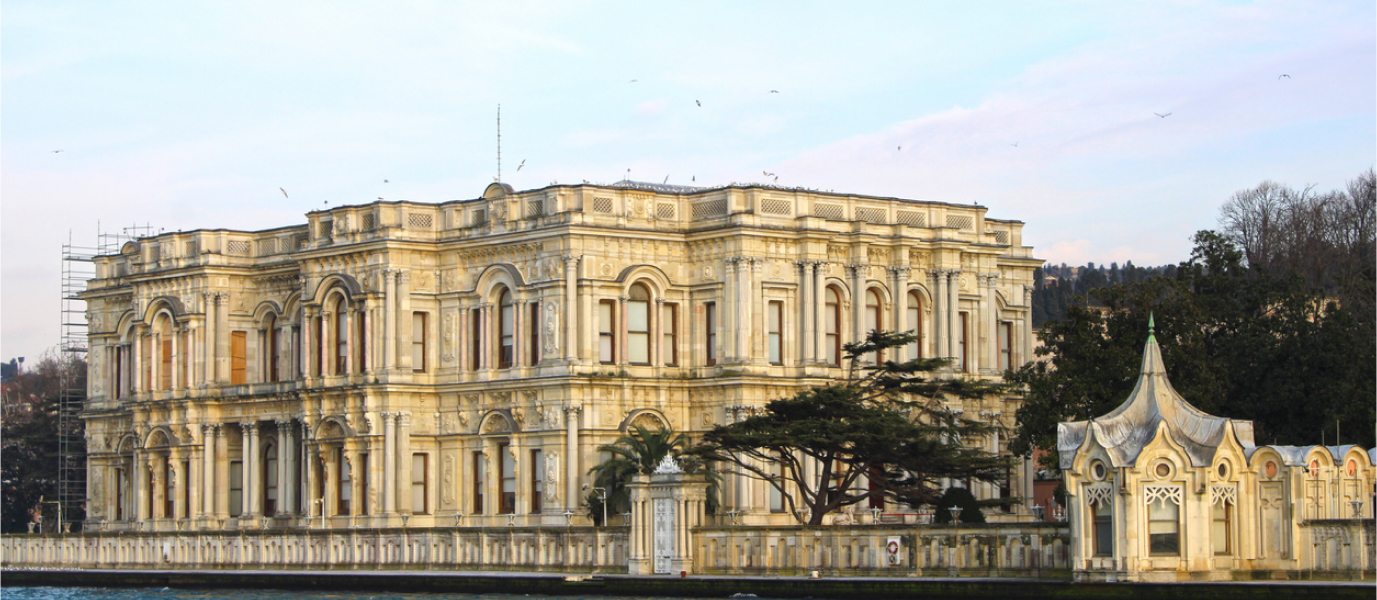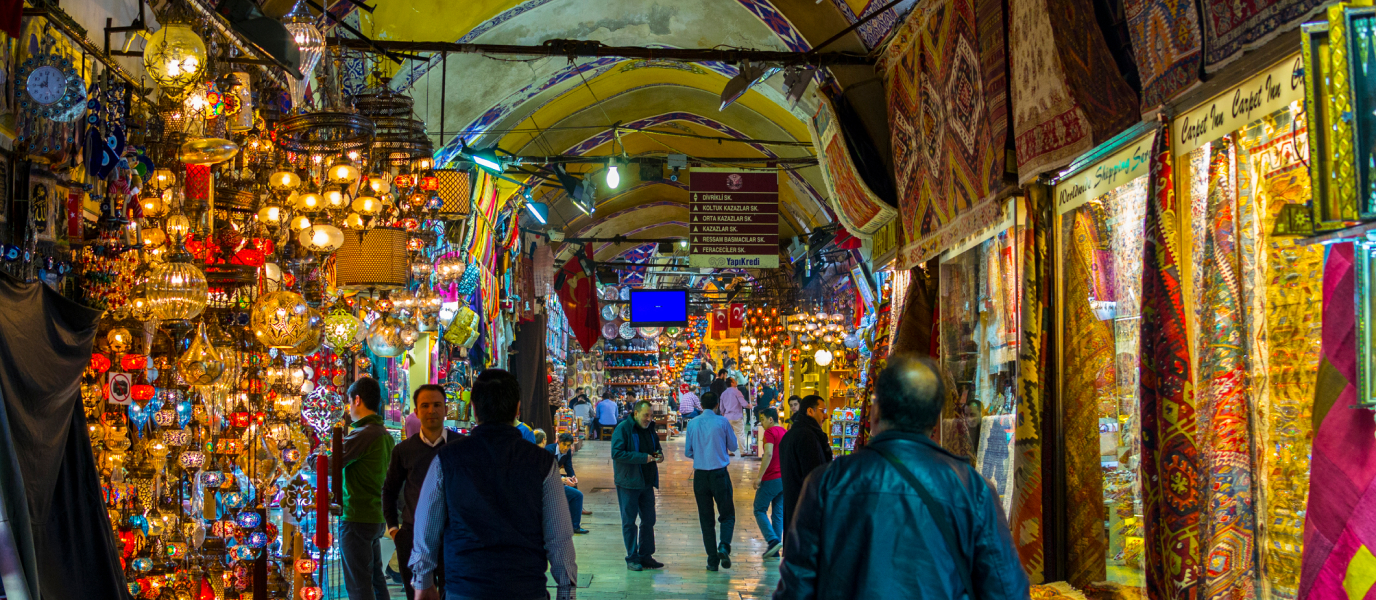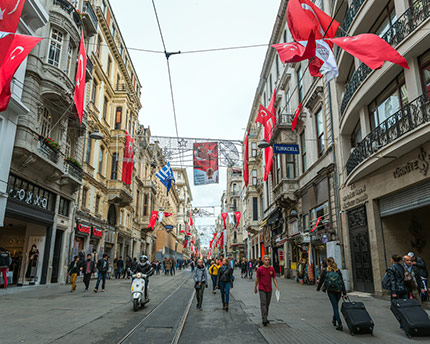Located on the Asian part of Istanbul, immediately north of Bosphorus Bridge, Beylerbeyi Palace was the second palace built along the Bosphorus and it was designed as the summer residence for the sultans of the Ottoman Empire and as a home for the foreign heads of state and leaders who visited the city.
History of Beylerbeyi Palace
Beylerbeyi Palace was built in the 1860s in the Beylerbeyi neighbourhood and its name means ‘Lord of Lords’, a title that was granted to the provincial governor. It occupies the space left by a former wooden palace which was destroyed by fire that belonged to Sultan Mahmud II.
Beylerbeyi Palace was commissioned by Sultan Abdülaziz (1830-1876). At the time, the Turkish leaders used to love building European-style palaces along the Bosphorus coast. Some say that Beylerbeyi Palace is a mini Versailles. The only thing is that, instead of being in France, it is on the line that separates East from West.
The most famous visitors to Beylerbeyi Palace included King Edward VIII and Mrs Simpson; the Austrian Emperor Franz Joseph; Empress Eugénie de Montijo, Napoleon III’s wife; and the Shah of Persia. According to legend, Empress Eugénie de Montijo was so captivated by the windows of Beylerbeyi Palace that she ordered identical ones to be built at the Tuileries Palace in Paris. It was also said that she was slapped by the sultan’s mother when entering the palace arm in arm with her son.
We also know that Beylerbeyi Palace was the last place where the deposed Sultan Abdülhamid II was captive between 1912 and his death in 1918.
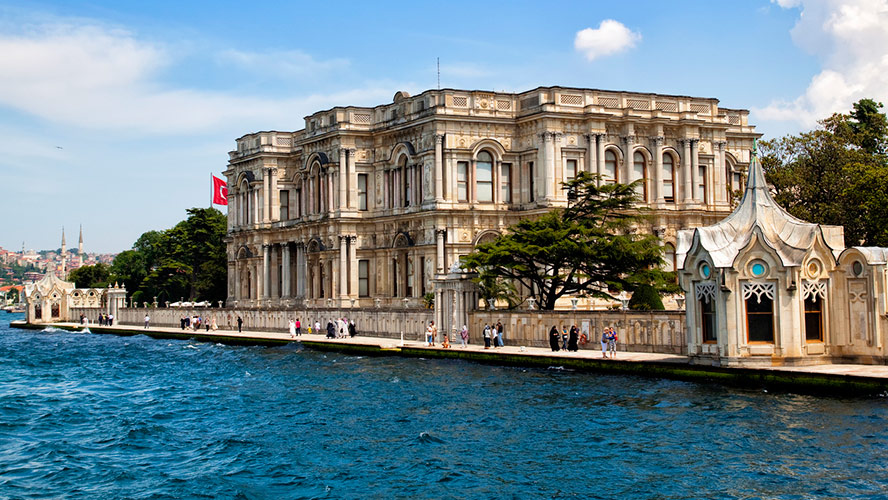
Architecture and interior at Beylerbeyi Palace
Designed in the Second Empire style by Sarkis Balyan, Beylerbeyi Palace seems fairly restrained compared to the excesses of Dolmabahçe or Küçüksu, despite its white marble construction and a rich Baroque decoration in the interior.
The palace looks its most attractive from the Bosphorus since it is where you can see its two spectacular bathing pavilions, one for women (harem) and the other for men (selamlik), along the waterfront. One of the most attractive rooms is the reception hall, which has a pool with striking sculptures and a fountain from which water flows continuously. Running water was popular in Ottoman houses for its pleasant ‘soundtrack’ and cooling effect during hot days.
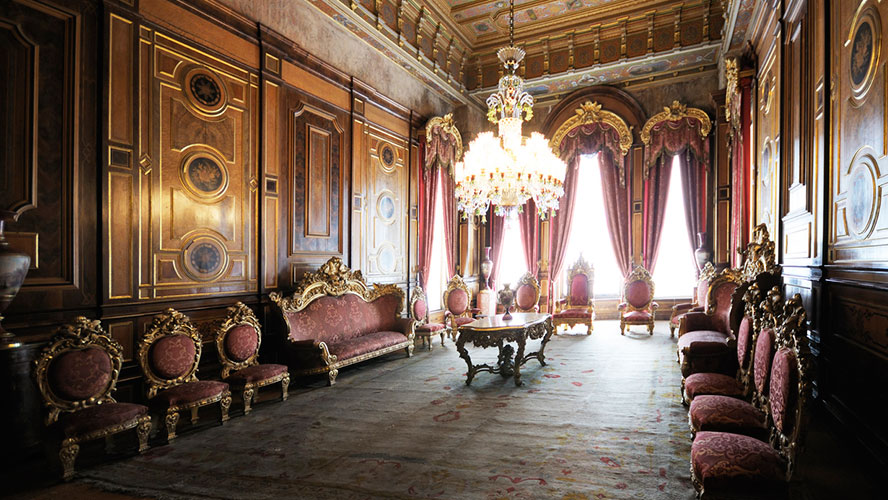
With a much smaller size than Topkapi Palace, Beylerbeyi Palace has three main entrances, six large halls and 24 rooms decorated with an exceptional taste. The budget was never held back. Egyptian reed matting was used on the floor as a form of insulation, the carpets are from the exclusive Hereke factory and woven in the imperial looms, and the crystal chandeliers are mostly from Baccarat (France) and Bohemia. We must also mention the French clocks and furniture, the European candelabras and the Chinese and Japanese porcelain.
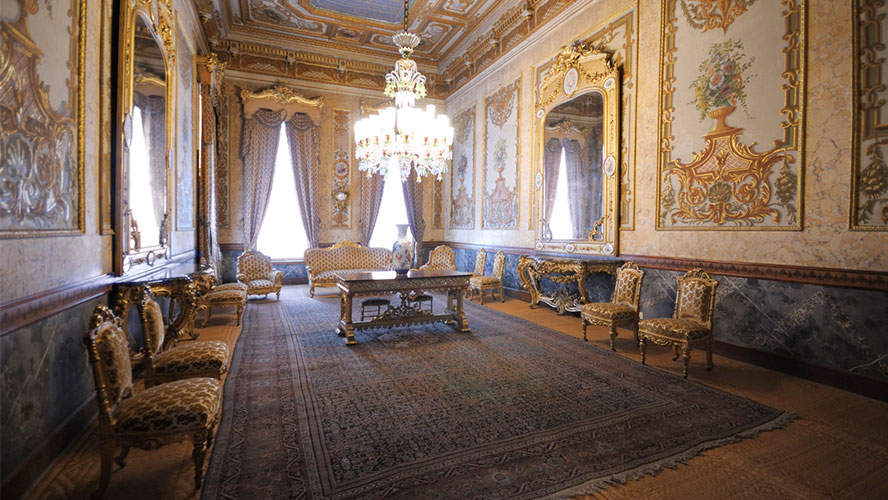
One of the palace’s rooms has a pool where the sultans used to bathe with their guests, and behind the building there are spectacular gardens with magnolia trees, a large pool and several decorative and relaxing pavilions.
Eyüp neighbourhood in Istanbul
Beylerbeyi Palace is one of the architectural icons of the Eyüp neighbourhood in Istanbul, which also includes the unique Eyüp Sultan mosque, where it is said that Muhammad’s standard-bearer or right-hand man, Ayyub al-Ansari, is buried since it is believed that he died there in the 7th century. His tomb was lost over centuries until, in the 15th century, a sultan found this place and ordered the construction of a religious complex which still exudes spirituality nowadays.
The building we see is from the 19th century because the original was destroyed by an earthquake. In any case, the Eyüp Sultan mosque is considered to be an Ottoman-style masterpiece which highlights a curious combination of white marble, gold and tiles. A unique feature is that the area reserved for women is on the upper floor, unlike other mosques.
Near the Eyüp Sultan mosque, you will find the famous Pierre Loti Café and an interesting cemetery along the Eyüp hill, which is a funerary treasure. If you do not want to climb the hill on foot, there is a cable car which you can pay with the Istanbulkart that leads you up to the Pierre Loti viewpoint. You will not regret this because the view from the Goldern Horn is breathtaking. And if you want to top off your experience in this unique neighbourhood, sit down and relax at the Pierre Loti Café. You will realise why the French novelist and adventurer Julien Viaud, better known as Pierre Loti, would go there every day to search for inspiration. If your stay coincides with the sunset, you will enjoy an unforgettable spectacle.




































































